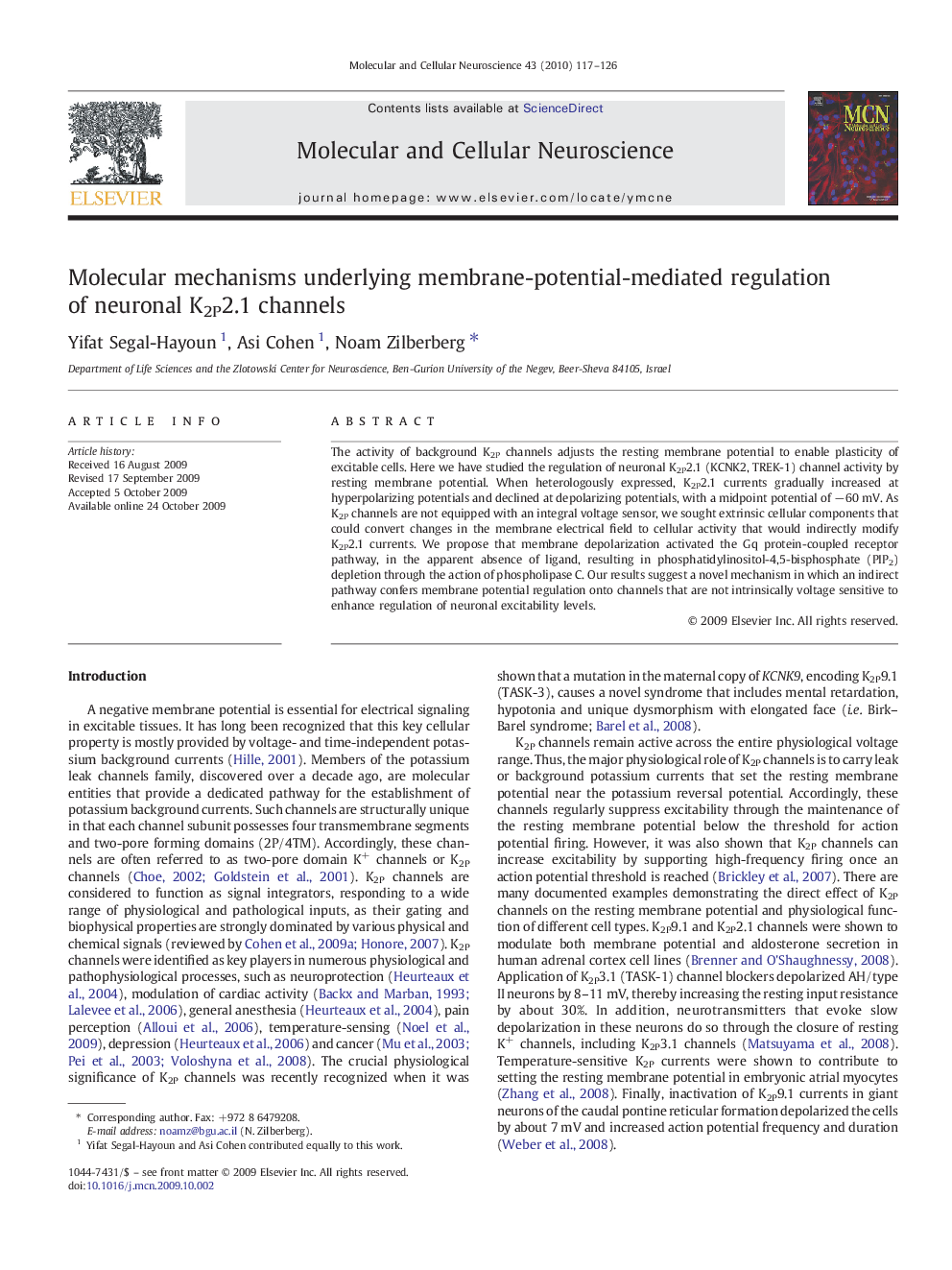| Article ID | Journal | Published Year | Pages | File Type |
|---|---|---|---|---|
| 2198906 | Molecular and Cellular Neuroscience | 2010 | 10 Pages |
The activity of background K2P channels adjusts the resting membrane potential to enable plasticity of excitable cells. Here we have studied the regulation of neuronal K2P2.1 (KCNK2, TREK-1) channel activity by resting membrane potential. When heterologously expressed, K2P2.1 currents gradually increased at hyperpolarizing potentials and declined at depolarizing potentials, with a midpoint potential of − 60 mV. As K2P channels are not equipped with an integral voltage sensor, we sought extrinsic cellular components that could convert changes in the membrane electrical field to cellular activity that would indirectly modify K2P2.1 currents. We propose that membrane depolarization activated the Gq protein-coupled receptor pathway, in the apparent absence of ligand, resulting in phosphatidylinositol-4,5-bisphosphate (PIP2) depletion through the action of phospholipase C. Our results suggest a novel mechanism in which an indirect pathway confers membrane potential regulation onto channels that are not intrinsically voltage sensitive to enhance regulation of neuronal excitability levels.
